- Home
- Barbara W. Tuchman
A Distant Mirror: The Calamitous 14th Century Page 2
A Distant Mirror: The Calamitous 14th Century Read online
Page 2
Discrepancies of supposed fact were often due to mistakes of oral transmission or later misreading of a manuscript source, as when the Dame de Courcy, subject of an international scandal, was mistaken by an otherwise careful 19th century historian for Coucy’s second wife, at a cost, for a while, of devastating confusion to the present author. The Comte d’Auxerre in the Battle of Poitiers was variously rendered by English chroniclers as Aunser, Aussure, Soussiere, Usur, Waucerre, and by the Grandes Chroniques of France as Sancerre, a different fellow altogether. Enguerrand was written as Ingelram in England. It is not surprising that I took the name Canolles to be a variant of the notorious brigand captain Arnaut de Cervole, only to find, when the circumstances refused to fit, that it was instead a variant of Knowles or Knollys, an equally notorious English captain. Though minor, this sort of difficulty can be unnerving.
Isabeau of Bavaria, Queen of France, is described by one historian as a tall blonde and by another as a “dark, lively, little woman.” The Turkish Sultan Bajazet, reputed by his contemporaries to be bold, enterprising, and avid for war, and surnamed Thunderbolt for the rapidity of his strikes, is described by a modern Hungarian historian as “effeminate, sensual, irresolute and vacillating.”
It may be taken as axiomatic that any statement of fact about the Middle Ages may (and probably will) be met by a statement of the opposite or a different version. Women outnumbered men because men were killed off in the wars; men outnumbered women because women died in childbirth. Common people were familiar with the Bible; common people were unfamiliar with the Bible. Nobles were tax exempt; no, they were not tax exempt. French peasants were filthy and foul-smelling and lived on bread and onions; French peasants ate pork, fowl, and game and enjoyed frequent baths in the village bathhouses. The list could be extended indefinitely.
Contradictions, however, are part of life, not merely a matter of conflicting evidence. I would ask the reader to expect contradictions, not uniformity. No aspect of society, no habit, custom, movement, development, is without cross-currents. Starving peasants in hovels live alongside prosperous peasants in featherbeds. Children are neglected and children are loved. Knights talk of honor and turn brigand. Amid depopulation and disaster, extravagance and splendor were never more extreme. No age is tidy or made of whole cloth, and none is a more checkered fabric than the Middle Ages.
One must also remember that the Middle Ages change color depending on who is looking at them. Historians’ prejudices and points of view—and thus their selection of material—have changed considerably over a period of 600 years. During the three centuries following the 14th, history was virtually a genealogy of nobility, devoted to tracing dynastic lines and family connections and infused by the idea of the noble as a superior person. These works of enormous antiquarian research teem with information of more than dynastic interest, such as Anselm’s item about the Gascon lord who bequeathed a hundred livres for the dowries of poor girls he had deflowered.
The French Revolution marks the great reversal, following which historians saw the common man as hero, the poor as ipso facto virtuous, nobles and kings as monsters of iniquity. Simeon Luce, in his history of the Jacquerie, is one of these, slanted in his text, yet unique in his research and invaluable for his documents. The giants of the 19th and early 20th centuries who unearthed and published the sources, annotated and edited the chronicles, collected the literary works, read and excerpted masses of sermons, treatises, letters, and other primary material, provided the ground on which we latecomers walk. Their work is now supplemented and balanced by modern medievalists of the post-Marc Bloch era who have taken a more sociological approach and turned up detailed hard facts about daily life—for example, the number of communion wafers sold in a particular diocese, as an indicator of religious observance.
My book is indebted to all these groups, beginning with the primary chroniclers. I realize it is unfashionable among medievalists today to rely on the chroniclers, but for a sense of the period and its attitudes I find them indispensable. Furthermore, their form is narrative and so is mine.
With all this wealth, empty spaces nevertheless exist where the problem is not contradictory information but no information. To bridge the gap, one must make use of what seems the likely and natural explanation, which accounts for the proliferation of “probably” and “presumably” in my text—annoying but, in the absence of documented certainty, unavoidable.
A greater hazard, built into the very nature of recorded history, is overload of the negative: the disproportionate survival of the bad side—of evil, misery, contention, and harm. In history this is exactly the same as in the daily newspaper. The normal does not make news. History is made by the documents that survive, and these lean heavily on crisis and calamity, crime and misbehavior, because such things are the subject matter of the documentary process—of lawsuits, treaties, moralists’ denunciations, literary satire, papal Bulls. No Pope ever issued a Bull to approve of something. Negative overload can be seen at work in the religious reformer Nicolas de Clamanges, who, in denouncing unfit and worldly prelates in 1401, said that in his anxiety for reform he would not discuss the good clerics because “they do not count beside the perverse men.”
Disaster is rarely as pervasive as it seems from recorded accounts. The fact of being on the record makes it appear continuous and ubiquitous whereas it is more likely to have been sporadic both in time and place. Besides, persistence of the normal is usually greater than the effect of disturbance, as we know from our own times. After absorbing the news of today, one expects to face a world consisting entirely of strikes, crimes, power failures, broken water mains, stalled trains, school shutdowns, muggers, drug addicts, neo-Nazis, and rapists. The fact is that one can come home in the evening—on a lucky day—without having encountered more than one or two of these phenomena. This has led me to formulate Tuchman’s Law, as follows: “The fact of being reported multiplies the apparent extent of any deplorable development by five- to tenfold” (or any figure the reader would care to supply).
Difficulty of empathy, of genuinely entering into the mental and emotional values of the Middle Ages, is the final obstacle, The main barrier is, I believe, the Christian religion as it then was: the matrix and law of medieval life, omnipresent, indeed compulsory. Its insistent principle that the life of the spirit and of the afterworld was superior to the here and now, to material life on earth, is one that the modern world does not share, no matter how devout some present-day Christians may be. The rupture of this principle and its replacement by belief in the worth of the individual and of an active life not necessarily focused on God is, in fact, what created the modern world and ended the Middle Ages.
What compounds the problem is that medieval society, while professing belief in renunciation of the life of the senses, did not renounce it in practice, and no part of it less so than the Church itself. Many tried, a few succeeded, but the generality of mankind is not made for renunciation. There never was a time when more attention was given to money and possessions than in the 14th century, and its concern with the flesh was the same as at any other time. Economic man and sensual man are not suppressible.
The gap between medieval Christianity’s ruling principle and everyday life is the great pitfall of the Middle Ages. It is the problem that runs through Gibbon’s history, which he dealt with by a delicately malicious levity, pricking at every turn what seemed to him the hypocrisy of the Christian ideal as opposed to natural human functioning. I do not think, however great my appreciation of the master otherwise, that Gibbon’s method meets the problem. Man himself was the formulator of the impossible Christian ideal and tried to uphold it, if not live by it, for more than a millennium. Therefore it must represent a need, something more fundamental than Gibbon’s 18th century enlightenment allowed for, or his elegant ironies could dispose of. While I recognize its presence, it requires a more religious bent than mine to identify with it.
Chivalry, the dominant political idea of the ruling cl
ass, left as great a gap between ideal and practice as religion. The ideal was a vision of order maintained by the warrior class and formulated in the image of the Round Table, nature’s perfect shape. King Arthur’s knights adventured for the right against dragons, enchanters, and wicked men, establishing order in a wild world. So their living counterparts were supposed, in theory, to serve as defenders of the Faith, upholders of justice, champions of the oppressed. In practice, they were themselves the oppressors, and by the 14th century the violence and lawlessness of men of the sword had become a major agency of disorder. When the gap between ideal and real becomes too wide, the system breaks down. Legend and story have always reflected this; in the Arthurian romances the Round Table is shattered from within. The sword is returned to the lake; the effort begins anew. Violent, destructive, greedy, fallible as he may be, man retains his vision of order and resumes his search.
A Note on Money
Medieval currencies derived originally from the libra (livre or pound) of pure silver from which were struck 240 silver pennies, later established as twelve pennies to the shilling or sous and 20 shillings or sous to the pound or livre. The florin, ducat, franc, livre, écu, mark, and English pound were all theoretically more or less equivalent to the original pound, although in the course of things their weight and gold content varied. The nearest to a standard was the coin containing 3.5 grams of gold minted by Florence (the florin) and Venice (the ducat) in the mid-13th century. The word “gold” attached to the name of a coin, as franc d’or, écu d’or, or mouton d’or, signified a real coin. When expressed by the name of the currency alone, or, in France, as a livre in one of its various forms—parisis, tournois, bordelaise, each differing slightly in value—the currency in question represented money of account which existed only on paper.
Given this glimpse of the complications of the problem, the non-specialist reader would be well advised not to worry about it, because the names of coins and currency mean nothing anyway except in terms of purchasing power. From time to time, in mention of the pay of men-at-arms, the wages of laborers, the price of a horse or a plow, the living expenses of a bourgeois family, the amounts of hearth taxes and sales taxes, I have tried to relate monetary figures to actual values. I have not attempted to translate various currencies into the equivalent of only one, such as livres or francs, because equivalency kept changing as did the gold or silver content of the coinage; moreover, real coins and money of account under the same name differed in value. I have, therefore, in each case, simply adopted the currency named by the document or chronicler, and would urge the reader simply to think of any given amount as so many pieces of money.
References to Sources
Sources will be found in the Bibliography and, for a particular item, in the Reference Notes at the end of the book, located by page number and an identifying phrase from the text.
Part One
Chapter 1
“I Am the Sire de Coucy”: The Dynasty
Formidable and grand on a hilltop in Picardy, the five-towered castle of Coucy dominated the approach to Paris from the north, but whether as guardian or as challenger of the monarchy in the capital was an open question. Thrusting up from the castle’s center, a gigantic cylinder rose to twice the height of the four corner towers. This was the donjon or central citadel, the largest in Europe, the mightiest of its kind ever built in the Middle Ages or thereafter. Ninety feet in diameter, 180 feet high, capable of housing a thousand men in a siege, it dwarfed and protected the castle at its base, the clustered roofs of the town, the bell tower of the church, and the thirty turrets of the massive wall enclosing the whole complex on the hill. Travelers coming from any direction could see this colossus of baronial power from miles away and, on approaching it, feel the awe of the traveler in infidel lands at first sight of the pyramids.
Seized by grandeur, the builders had carried out the scale of the donjon in interior features of more than mortal size: risers of steps were fifteen to sixteen inches, window seats three and a half feet from the ground, as if for use by a race of titans. Stone lintels measuring two cubic yards were no less heroic. For more than four hundred years the dynasty reflected by these arrangements had exhibited the same quality of excess. Ambitious, dangerous, not infrequently ferocious, the Coucys had planted themselves on a promontory of land which was formed by nature for command. Their hilltop controlled passage through the valley of the Ailette to the greater valley of the Oise. From here they had challenged kings, despoiled the Church, departed for and died on crusades, been condemned and excommunicated for crimes, progressively enlarged their domain, married royalty, and nurtured a pride that took for its battle cry, “Coucy à la merveille!” Holding one of the four great baronies of France, they scorned territorial titles and adopted their motto of simple arrogance,
Roi ne suis,
Ne prince ne duc ne comte aussi;
Je suis le sire de Coucy.
(Not king nor prince,
Duke nor count am I;
I am the lord of Coucy.)
Begun in 1223, the castle was a product of the same architectural explosion that raised the great cathedrals whose impulse, too, sprang from northern France. Four of the greatest were under construction, at the same time as the castle—at Laon, Reims, Amiens, and Beauvais, within fifty miles of Coucy. While it took anywhere from 50 to 150 years to finish building a cathedral, the vast works of Coucy with donjon, towers, ramparts, and subterranean network were completed, under the single compelling will of Enguerrand de Coucy III, in the astonishing space of seven years.
The castle compound enclosed a space of more than two acres. Its four corner towers, each 90 feet high and 65 in diameter, and its three outer sides were built flush with the edge of the hill, forming the ramparts. The only entrance to the compound was a fortified gate on the inner side next to the donjon, protected by guard towers, moat, and portcullis. The gate opened onto the place d’armes, a walled space of about six acres, containing stables and other service buildings, tiltyard, and pasture for the knights’ horses. Beyond this, where the hill widened out like the tail of a fish, lay the town of perhaps a hundred houses and a square-towered church. Three fortified gates in the outer wall encircling the hilltop commanded access to the outside world. On the south side facing Soissons, the hill fell away in a steep, easily defensible slope; on the north facing Laon, where the hill merged with the plateau, a great moat made an added barrier.
Within walls eighteen to thirty feet thick, a spiral staircase connected the three stories of the donjon. An open hole or “eye” in the roof, repeated in the vaulted ceiling of each level, added a little extra light and air to the gloom, and enabled arms and provisions to be hoisted from floor to floor without the necessity of climbing the stairs. By the same means, orders could be given vocally to the entire garrison at one time. As many as 1,200 to 1,500 men-at-arms could assemble to hear what was said from the middle level. The donjon had kitchens, said an awed contemporary, “worthy of Nero,” and a rainwater fishpond on the roof. It had a well, bread ovens, cellars, storerooms, huge fireplaces with chimneys on each floor, and latrines. Vaulted underground passageways led to every part of the castle, to the open court, and to secret exits outside the ramparts, through which a besieged garrison could be provisioned. From the top of the donjon an observer could see the whole region as far as the forest of Compiègne thirty miles away, making Coucy proof against surprise. In design and execution the fortress was the most nearly perfect military structure of medieval Europe, and in size the most audacious.
One governing concept shaped a castle: not residence, but defense. As fortress, it was an emblem of medieval life as dominating as the cross. In the Romance of the Rose, that vast compendium of everything but romance, the castle enclosing the Rose is the central structure, which must be besieged and penetrated to reach the goal of sexual desire. In real life, all its arrangements testified to the fact of violence, the expectation of attack, which had carved the history of the Middle A
ges. The castle’s predecessor, the Roman villa, had been unfortified, depending on Roman law and the Roman legions for its ramparts. After the Empire’s collapse, the medieval society that emerged was a set of disjointed and clashing parts subject to no central or effective secular authority. Only the Church offered an organizing principle, which was the reason for its success, for society cannot bear anarchy.
Out of the turbulence, central secular authority began slowly to cohere in the monarchy, but as soon as the new power became effective it came into conflict with the Church on the one hand and the barons on the other. Simultaneously the bourgeois of the towns were developing their own order and selling their support to barons, bishops, or kings in return for charters of liberties as free “communes.” By providing the freedom for the development of commerce, the charters marked the rise of the urban Third Estate. Political balance among the competing groups was unstable because the king had no permanent armed force at his command. He had to rely on the feudal obligation of his vassals to perform limited military service, later supplemented by paid service. Rule was still personal, deriving from the fief of land and oath of homage. Not citizen to state but vassal to lord was the bond that underlay political structure. The state was still struggling to be born.

 Practicing History: Selected Essays
Practicing History: Selected Essays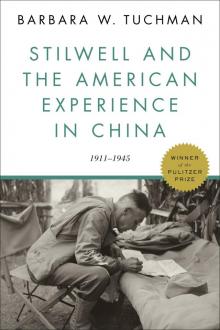 Stilwell and the American Experience in China, 1911-45
Stilwell and the American Experience in China, 1911-45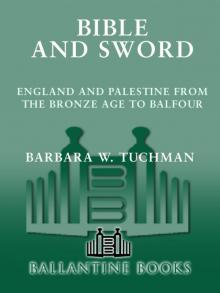 Bible and Sword: England and Palestine From the Bronze Age to Balfour
Bible and Sword: England and Palestine From the Bronze Age to Balfour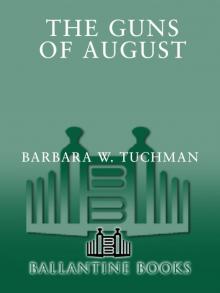 The Guns of August
The Guns of August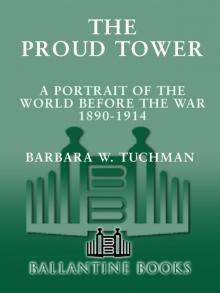 The Proud Tower: A Portrait of the World Before the War, 1890-1914
The Proud Tower: A Portrait of the World Before the War, 1890-1914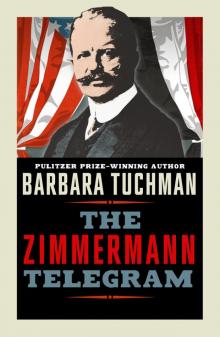 The Zimmermann Telegram
The Zimmermann Telegram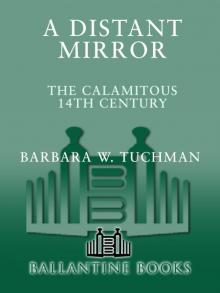 A Distant Mirror: The Calamitous 14th Century
A Distant Mirror: The Calamitous 14th Century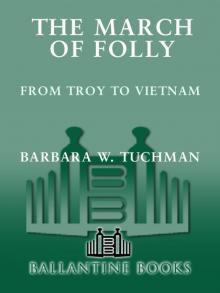 The March of Folly: From Troy to Vietnam
The March of Folly: From Troy to Vietnam The First Salute
The First Salute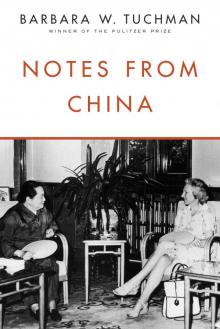 Notes From China
Notes From China Practicing History
Practicing History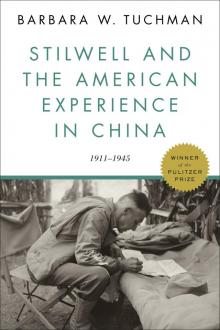 Stilwell and the American Experience in China
Stilwell and the American Experience in China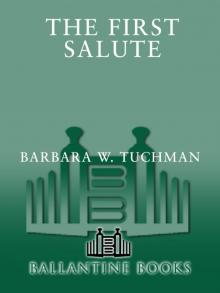 First Salute
First Salute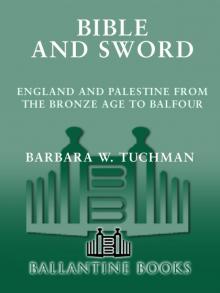 Bible and Sword
Bible and Sword